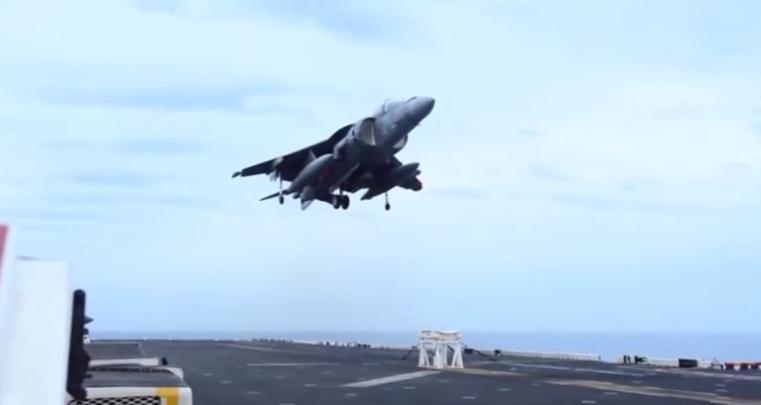 Over the past several months, we have seen the U.S. Army make huge strides in the study and implementation of 3D printing to make personnel lives safer, provide potentially better food options, and allow for repairs on the fly. They have also been studying the use of the technology to create more precise weapons, that will ultimately prevent collateral damage during combat. The U.S. Army certainly appears to be at the forefront of 3D printing, among other U.S. Military branches.
Over the past several months, we have seen the U.S. Army make huge strides in the study and implementation of 3D printing to make personnel lives safer, provide potentially better food options, and allow for repairs on the fly. They have also been studying the use of the technology to create more precise weapons, that will ultimately prevent collateral damage during combat. The U.S. Army certainly appears to be at the forefront of 3D printing, among other U.S. Military branches.
While the Army publicizes a lot of their 3D printing initiatives, that doesn’t mean that similar advancements are not occurring within the other branches of the U.S. Military. Without a doubt, 3D printing is being used to some extent within all 5 divisions of the U.S. Armed Forces.
Back in May, Marine Captain William Mahoney’s nose landing gear failed on his AV-8B Harrier fighter jet. He was forced to make a very unique vertical landing, to rest the nose of the aircraft on top of a stool, aboard the USS Bataan (LHD5) aircraft carrier. In the video below, you can see Mahoney landing the plane in the same way we are used to seeing helicopters land.
Doug Greenwood, an aerospace engineer, as well as other workers on the Bataan, dismantled the nose cone of the aircraft. “The hard landing damaged a portion of one of the structural frames in the nose cone,” Greenwood explained.
The team of technicians decided that the best course of action would be to remove the damaged section and then replace it with a matching section that could be cut out from a spare frame at the Fleet Readiness Center East. “Sheet metal reinforcements, called ‘doublers’ would be needed to mate the donor section with the undamaged portion of the frame, which remained in the aircraft,” Greenwood said. “The challenge for FRCE was to manufacture the reinforcement doublers and get them to the ship for the repair.”

Patternmaker Caleb Guelich, left, and Engineer Justin Reynolds, both of Fleet Readiness Center East, inspect
polymer form blocks made through 3D printing. (U.S. Navy photo by Dave Marriott/released)
Fortunately the technicians were up for this challenge. Using the Original Equipment Manufacturer (OEM) CAD model, the team designed the forming tools in less than 48 hours, with one of the forming tools taking 5 hours, and the other 30 hours to completely 3D print. The tools were printed using a polycarbonate material, that features very high compressive strength. It can withstand pressures of up to 4,000 pounds per square inch.
“Using traditional, nondigital tool design and building processes, manufacture of the doublers would likely have taken two to three weeks,” Greenwood said. “Using the 3-D digital data and AM, time and cost were reduced significantly.”
Once the tools were finished 3D printing, they were used to form the flat patterns into the doubler parts. Once the forming process was complete, the parts were heated and then painted. All-in-all, it took just one week from the time the technicians recieved the OEM CAD model until the new parts were ready to be put onto the aircraft.
This goes to show you that the military has many uses for 3D printing. Without the technology, this process would have taken much longer, and cost tax payers more money. What do you think about the military’s use of 3D printing to repair this aircraft? Discuss in the AV-8B Harrier forum thread on 3DPB.com
Subscribe to Our Email Newsletter
Stay up-to-date on all the latest news from the 3D printing industry and receive information and offers from third party vendors.
You May Also Like
3D Printing Financials: Fathom Struggles in Financial Quicksand During Critical Transition
Facing a year of key transitions and financial pressures, Fathom (Nasdaq: FTHM) has filed its annual report for 2023 with the U.S. Securities and Exchange Commission (SEC). The document outlines...
Latest Earnings Overview for Australian 3D Printing Firms Titomic and AML3D
Australian 3D printing manufacturing firms Titomic (ASX: TTT) and AML3D (ASX: AL3) reported their financial results for the period from July to December 2023, marking the first half of their...
3D Printing Webinar and Event Roundup: April 7, 2024
Webinars and events in the 3D printing industry are picking back up this week! Sea-Air-Space is coming to Maryland, and SAE International is sponsoring a 3D Systems webinar about 3D...
3D Printing Financials: Unpacking Farsoon and BLT’s 2023 Performance
In the Chinese 3D printing industry, two companies, Farsoon (SHA: 688433) and Bright Laser Technologies, or BLT (SHA: 688333), have recently unveiled their full-year earnings for 2023. Farsoon reported increases...
































